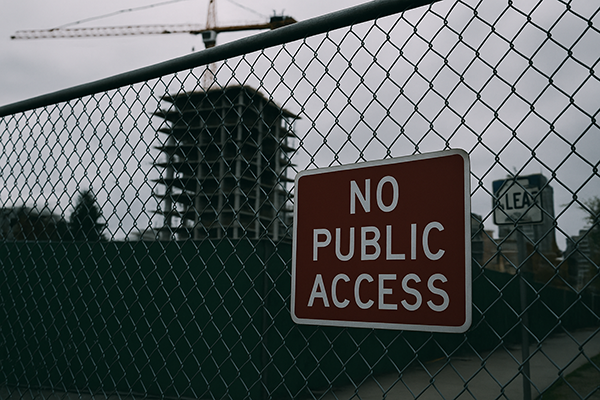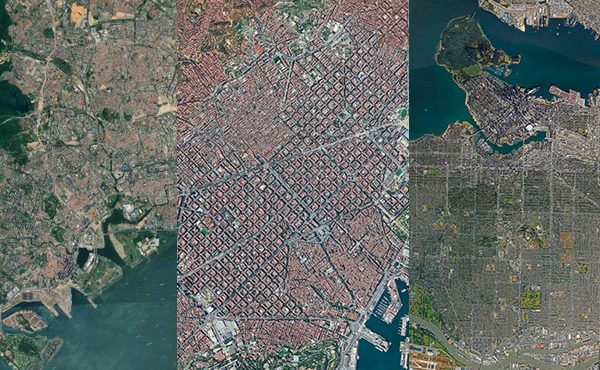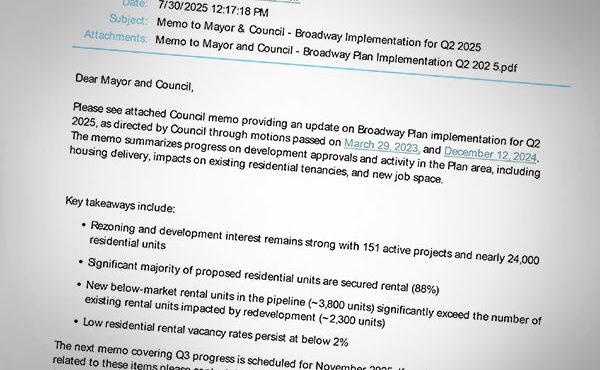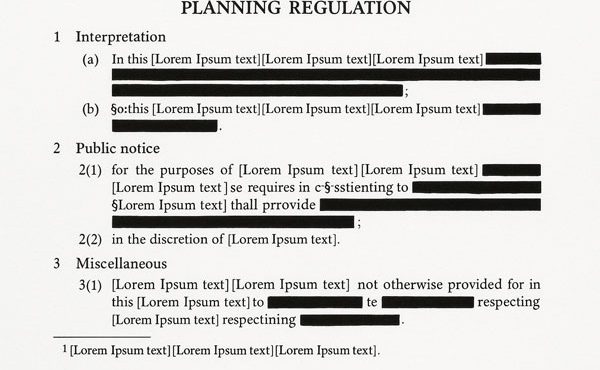
In British Columbia, democracy is being redefined—not through elections or referendums, but through legislation with quiet names and sweeping consequences.
Bill 13 and Bill 15 are not household names, nor do they arrive with much fanfare. But together, they represent a fundamental reordering of power between the Province and its municipalities. Framed as tools to accelerate housing and infrastructure, these bills do far more than expedite permits or streamline approvals. They hand the Province unprecedented authority to override local planning, ignore zoning bylaws, and silence public consultation—in effect, replacing negotiation with command.
Bill 13, deceptively named the “Miscellaneous Statutes Amendment Act,” does anything but tinker at the margins. By amending the Housing Supply Act, Local Government Act, and Vancouver Charter, it gives the provincial government the power to nullify any municipal bylaw that conflicts with provincial housing mandates. Zoning, subdivision controls, building permits, affordable housing provisions, sign bylaws, even landscaping requirements—all are now subordinate. The Vancouver Charter, once a symbol of the city’s relative autonomy, is rewritten to ensure that any local rule inconsistent with a provincial enactment simply “has no effect.”
Bill 15, the Infrastructure Projects Act, completes the shift from collaboration to control. It allows the Province to take over permitting and land use approvals for any infrastructure project deemed of “provincial significance” —including schools, hospitals, transit-oriented developments (TODs), and potentially large swaths of urban land tied to future transit expansions.
Certified professionals, appointed by the Province, can now stand in for municipal staff in approving and administering development permits. Let’s not forget that the “External Experts” appointed by the Province for Bills 44, 46 and 47 were biased in favour of pro-development.
In the City of Vancouver, where much of the land already falls within designated TOD areas, this amounts to near-total provincial planning authority.
The problem is compounded by how these bills are drafted: dense, technical, and opaque. Few outside of legal or planning circles fully understand their implications, which, perhaps, is part of the point. If the public knew what was at stake, the response might look very different. If the opposition had the full picture, their questions might grow sharper.
Everyone deserves to know how profoundly these changes reshape the way decisions are made in our cities. Until then, the transformation continues—quietly, but radically.
Together, these bills signal a profound departure from the planning principles that have governed BC’s cities for decades. Where previous legislation like Bills 45, 46, and 47 heavy-handedly set targets and guidelines—to the point of specifying building types—Bills 13 and 15 enforce compliance. If municipalities don’t act fast enough, the Province now has the legal tools to act for them. The language has shifted from incentive to ultimatum.
Some opposition voices, including the Union of BC Municipalities, are beginning to sense that something isn’t right. But too often, their concern is fragmented or narrowly focused on Bill 15, with much of the critique centring on changes to the environmental review process, while overlooking the bill’s deeper implications for municipal autonomy and land use control. Bill 13, which arguably has even greater implications for zoning power and local governance, has flown almost entirely under the radar.
The rationale for these powers rests on a familiar claim: that municipal governments are the bottleneck preventing the housing we need. But this narrative grows shakier by the day. As of 2025, the Vancouver region faces a glut of approved but unbuilt condos and rentals. Developers are delaying, not because they’re waiting on city approval, but because the economics no longer work. Projects are stalled by issues such as high interest rates, construction costs, and a market saturated with units too expensive for most to afford.
The problem is not process. It is profit.
There is also a deeper fallacy embedded in the supply-first narrative: the idea that adding housing automatically makes cities more affordable. Advocates frequently cite Montreal as a success story, implying that its housing production caused rents to stabilize. But data shows Vancouver added twice as much housing as Montreal, yet remains far less affordable. If supply alone explains price, this should not be possible. Urban systems are complex, and causation is difficult to prove. But that doesn’t stop supply-side proponents from presenting correlation as fact. Here again, we are confronted by planning by spreadsheet.
A 2024 analysis by Patrick Condon and Thomas Kroeker further dismantles this logic. Vancouver, they show, has added more housing units per capita than any other North American centre city—nearly 200% more since the 1960s—yet now faces a housing affordability crisis unmatched on the continent. Over that same period, housing prices in Vancouver have increased by 600% relative to median incomes. Adding supply did not lead to affordability. Instead, it coincided with runaway land value inflation.
The problem, they argue, lies not in zoning but in the speculative forces driving urban land prices. The “land price residual”—the portion of value that remains after accounting for construction costs—has ballooned, particularly in cities like Vancouver, where buildable land is treated as a speculative asset. Far from lowering prices, added density often increases the value of land beneath it, ensuring that any potential cost savings are absorbed by landowners.
Other forces are far more influential than zoning: low interest rates, the financialization of housing, immigration pressures, and the global shift from wage-based to asset-based economies, with housing as the dominant asset class. Without policies to manage land values—such as mandating social benefit outcomes as a condition of rezoning—market-based solutions will only enrich landowners, not solve affordability.
Condon and Kroeker point to successful policy tools elsewhere. Vienna, Singapore, and Cambridge, Massachusetts, each offer models that tie increased density to guaranteed affordability, but it’s important to recognize that the successes of each are tied to intricate political and regulatory ecosystems very different from local conditions.
Many anecdotal stories are tying the Province’s heavy-handed approach to housing to David Eby’s 2023 visit to Singapore, for example. But Singapore has a vastly different political system and history related to housing provision, and its relevance to Vancouver is limited, as clearly outlined by the Canadian Centre for Policy Alternative.
Vancouver itself, in the 1980s and ’90s, captured 80% of land value uplift from rezonings and reinvested it in public benefits like affordable housing. These examples show that zoning isn’t the problem—it can be the solution, if used to capture and redistribute land wealth.
So why the urgency? And why now? The clearest answer may lie not in planning policy but political convenience. These bills deliver exactly what the development lobby has long sought: faster approvals, looser controls, and minimal interference from councils or communities. The Urban Development Institute (UDI), which has lobbied hard for many of these changes, has found its vision translated into law. In this light, the Province’s actions look less like housing reform and more like regulatory capture.
The result is a planning system governed by exception. As I argued in an earlier piece, policies framed as instruments of care or efficiency can, in practice, become tools of centralized control and violence. Provincial mandates become de facto zoning. Public hearings become optional. And local governments are left to rubber-stamp decisions they did not make. The Union of BC Municipalities (UBCM) has expressed deep concerns about this shift, citing the absence of meaningful consultation and the potential financial and legal liability now facing municipalities.
If a provincially fast-tracked project fails, who is accountable? If a local bylaw is overridden, who pays the price—politically or otherwise?
Vancouver, unsurprisingly, is ground zero. The amendments to its Charter mean that even if a neighbourhood plan limits a development to six storeys, a developer can now propose twenty if the Province allows it. The City must process the application, even if it violates its own plans.
This isn’t just a change in scale. It’s a change in who gets to decide what cities look like.
And in many cases, those making the decisions don’t even live in the communities they’re reshaping. They are detached from the everyday realities of the neighbourhoods their policies transform—from the local parks, corner stores, transit stops, and civic rhythms that give a place its character and needs its nuance.
Urban planning has always involved a tension between expertise, politics, and public voice. But these bills resolve that tension by cutting out two of the three. What remains is a technocratic exercise in implementation, devoid of local nuance or democratic input. A system once designed to balance interests is now structured to deliver outcomes…fast.
What gets lost in the speed is everything that makes planning worth doing: public trust, community vision, and the legitimacy that comes from dialogue rather than decree. When local planning becomes provincial command, cities stop being self-governing communities. They become construction sites with a script.
And the public? They’re welcome to watch—from behind the fence.
***
Other relevant Spacing Vancouver articles:
**
Erick Villagomez is the Editor-in-Chief at Spacing Vancouver and teaches at UBC’s School of Community and Regional Planning. He is also the author of The Laws of Settlements: 54 Laws Underlying Settlements Across Scale and Culture.




